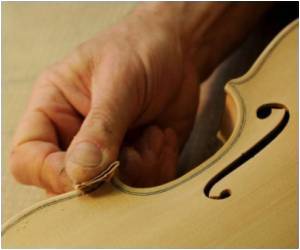Countless strands of spider silk have been spun by a Japanese researcher to create a set of violin strings.

That may arise from the way the strings are twisted, resulting in a "packing structure" that leaves practically no space between any of the strands, the BBC reported.
"Bowed string instruments such as the violin have been the subject of many scientific studies," Dr Shigeyoshi Osaki of Japan's Nara Medical University said.
"However, not all of the details have been clarified, as most players have been interested in the violin body rather than the properties of the bow or strings."
Dr Osaki used 300 female Nephila maculata spiders - one of the species of "golden orb-weavers" known for their complex webs - to provide the dragline silk that spiders dangle from.
For every string, Dr Osaki twisted between 3,000 and 5,000 individual strands of silk in one direction to form a bundle.
Advertisement
He then measured their tensile strength - a vital factor for violinists wishing to avoid breaking a string in the middle of a concerto.
Advertisement
A closer study using an electron microscope revealed that, while the strings themselves were perfectly round, in cross-section the strands had been compressed into a range of different shapes that all fit closely together, leaving no space between them.
Dr Osaki suggested that it is this feature of the strings that lends them their strength and, importantly, their unique tone.
"Several professional violinists reported that spider strings... generated a preferable timbre, being able to create a new music," he said.
"The violin strings are a novel practical use for spider silk as a kind of high value-added product, and offer a distinctive type of timbre for both violin players and music lovers worldwide," he added.
The study has been published in a forthcoming edition of the journal Physical Review Letters.
Source-ANI









